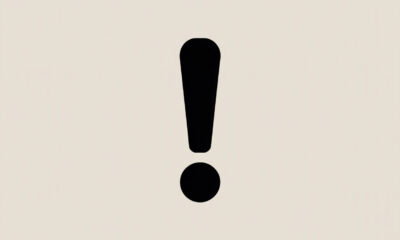informational
How to Be Humorous in a Conversation: Step-by-Step Guide 2025

You’re probably wondering what a guy who never spoke a word on screen is doing writing about conversation. It’s a fair question. But let me tell you, when your main tools are a horn, a harp, and a ridiculous wig, you learn a thing or two about communication that goes far beyond words. Many people freeze up when trying to be funny. You’ve likely felt that awkward silence after a joke lands with all the grace of a dropped anvil.
The truth is, being humorous in 2025 is not about having stand-up comedy skills, it’s about using simple techniques that anyone can learn. This guide provides practical methods that work in everyday conversations, using techniques from professional comedians and communication experts. These tips work whether you’re trying to be funny with a girl, a guy, or your new boss who looks suspiciously like Margaret Dumont. They apply universally.
| Humor Technique | How It Works | Best Used For | Caution |
|---|---|---|---|
| Rule of Three | Create a pattern with two items, then break it with a third. | Quick jokes, stories | May not work in all cultures. |
| Strategic Exaggeration | Amplify reality until it becomes absurd. | Relatable situations | Keep it rooted in some truth. |
| Self-Deprecating Humor | Make light of your own minor quirks. | Building rapport | Avoid your deep insecurities. |
| Left Turn Method | Build an expectation, then pivot somewhere else entirely. | Surprise humor | Don’t overuse this. |
| Juxtaposition | Connect two unrelated concepts for a funny contrast. | Highlighting contrasts | Requires some creativity. |
| Observational Humor | Comment on shared, everyday experiences. | Daily situations | You must practice paying attention. |
| Friendly Teasing | Make playful remarks within established boundaries. | Close relationships | Watch their reactions carefully. |
| Perfect Timing | Use strategic pauses and deliver the punchline effectively. | Improving any joke | This takes practice to get right. |
1. Master the Rule of Three Technique
The rule of three is a classic in comedy. My brothers and I used it all the time. Two of us would do something normal, then I’d show up and chase a pretty girl. Pattern, pattern, chaos. It works by setting up a pattern with two items and then disrupting it with an unexpected third.
How it works:
- Start with two direct or normal items.
- Follow with a third item that breaks the pattern.
- Deliver it with consistent timing.
Examples:
- “For the trip, I need to pack my toothbrush, my passport, and my inflatable flamingo.”
- “My goals for this weekend are to do laundry, get groceries, and finally teach my cat how to play the harp.”
This technique works because our brains expect patterns. When you break that expectation, it creates a surprise, which is the foundation of humor. This method is often mentioned in guides on being funny and on platforms like Reddit.
Cultural Awareness: This is a common device in Western comedy. Its effectiveness might not be the same in other cultures. Without familiarity with this narrative structure, the joke might be lost or just seem confusing.
2. Use Strategic Exaggeration
Exaggeration was my bread and butter. Did I really have a pocket that could hold a lit candle, a hot cup of coffee, and a blowtorch? Of course not. But it got a laugh every time. It turns ordinary situations into comedy by amplifying reality just enough to be funny.
How to exaggerate effectively:
- Pick relatable situations (being tired, hungry, or facing a minor inconvenience).
- Amplify one specific detail to an absurd level.
- Use facial expressions and gestures that match the story.
Context-Specific Applications:
| Setting | Strategic Exaggeration Example |
|---|---|
| Professional Meeting | “If my inbox gets any fuller, I’ll need to hire an assistant just for my emails.” |
| First Date | “I’m the kind of chef who somehow manages to burn salad.” |
| Casual Party | “If procrastinating were an Olympic sport, I’d have more gold medals than Michael Phelps.” |
Exaggeration works best when it starts from a sliver of truth. The audience recognizes the real experience but laughs at the comical inflation.
3. Practice Self-Deprecating Humor Safely
I built a career on looking foolish, tripping over my own feet, getting tangled in curtains, and generally causing mayhem. It makes you approachable. People aren’t threatened by someone who can laugh at themselves. However, there’s a thin line between funny and just sad.
Guidelines for healthy self-deprecation:
- Focus on minor flaws or universal experiences.
- Keep it light (not deep character flaws).
- Balance it with confidence in other moments.
Context-Appropriate Examples:
- Professional: “My PowerPoint skills are stuck in the ’90s, but let’s see if I can make this work.”
- First Date: “I have the singing voice of a confused goose, so I’ll spare you my karaoke stories for now.”
- Friends: “Remember that time I thought I could assemble that bookshelf without instructions? What a disaster.”
Cultural Note: While appreciated in many Western cultures for showing humility, self-deprecating humor can cause discomfort in some Asian societies, where it might be seen as a cry for pity instead of a joke.
4. Apply the Left Turn Method
This is all about setting up an expectation and then… honk… going the other way. The left turn method creates humor by leading the listener down one path before suddenly veering off course.
Steps to create a left turn:
- Start with a setup that implies a standard conclusion.
- Build anticipation along that expected path.
- Abruptly pivot to an unexpected and funny direction.
Example: “I’ve been working on my fitness goals. I can now watch a full season of a show on Netflix… without getting up for snacks.”
This technique works because of the surprise. When you yank the audience in a new direction, their surprise often turns into laughter.
5. Find Humor Through Juxtaposition
Comedy is often about strange pairings. A dignified woman… and me, pulling a fish out of my pocket. It’s the contrast that gets them. Juxtaposition creates comedy by highlighting odd pairings or unlikely similarities between things that don’t belong together.
How to find juxtaposition opportunities:
- Look for ironic situations in your surroundings.
- Identify mismatches between how something looks and how it acts.
- Connect two completely unrelated ideas.
Examples:
- Seeing a giant, muscular man walking a tiny chihuahua.
- “My diet and my social life are on two different paths that, sadly, never cross.”
Training yourself to see these contrasts in daily life gives you an endless supply of material.
6. Develop Observational Humor Skills
Step-by-Step Process:
- Practice Active Observation: Pay attention to the small, silly details of life. Watch for quirks in how people act or the universal struggles we all face.
- Record Your Observations: Keep a note of anything funny, odd, or frustrating you see. This could be strange product labels, awkward conversations, or minor annoyances.
- Identify Patterns and Connections: Group similar observations. Ask yourself, “Why is this funny?” or “Has anyone else noticed this?”
- Exaggerate and Twist for Humor: Take an ordinary observation and blow it out of proportion. Add a silly comparison or imagine an absurd outcome.
- Practice Sharing Out Loud: Try your observations on friends and family. See what gets a reaction and fine-tune your delivery.
Specific Exercise Examples:
- Grocery Store: Notice the silent, desperate search for a perfectly ripe avocado.
- Public Transport: Observe the unspoken battle for the armrest.
- Family Dinner: Comment on the weird ritual of passing the mashed potatoes in only one direction.
For more real-world examples of observational humor, check out this video demonstration on YouTube:
https://www.youtube.com/watch?v=0dC3jj-mlkE
7. Guidelines for Friendly Teasing
Even though I was silent, I teased my brothers constantly. But it was always with a smile. The moment the smile fades, you’ve gone from teasing to being a bully. And nobody likes a bully, not even in vaudeville.
Core Principles:
- Only tease people you have a good relationship with.
- Both of you should be laughing and relaxed.
Distinguishing Friendly Teasing from Mockery:
| Friendly Teasing | Hurtful Mockery |
|---|---|
| Both people are laughing and relaxed. | The target looks embarrassed or upset. |
| It’s about minor, non-sensitive topics. | It’s about appearance, identity, or core traits. |
| It strengthens the relationship. | It damages trust and causes distress. |
| It stops when the person asks. | It continues even when they protest. |
Real-Time Comfort Assessment:
- Watch body language: Look for tense posture, avoiding eye contact, or a forced smile.
- Listen to reactions: Stop immediately if they ask you to or if they say “That’s not funny.”
- Check in directly: If you’re unsure, just ask, “Hey, am I going too far?”
8. Time Your Delivery Perfectly
Ah, timing. The difference between a laugh and a confused stare. I couldn’t use words, so I had to rely on a perfectly timed pause or a sudden blast from my horn. It’s all about the space around the joke.
Timing essentials:
- Place the punchline at the very end of the sentence.
- Pause for a beat right before the punchline.
- Give people a moment to laugh afterward.
- Cut extra words that weaken the impact.
Example:
Compare:
“I realized yesterday while trying on clothes that I need to go on a diet.”
with:
“I need to go on a diet… I realized this yesterday while trying on clothes… they were labeled ‘one size fits all.’ They lied.”
The second version uses pauses to build tension and places the punchline at the very end for maximum effect.
Watch this video demonstration on comedic timing to see these principles in action:
https://www.youtube.com/watch?v=0dC3jj-mlkE
9. Recovery Strategies for Failed Jokes
Believe me, I’ve had gags fall flat. Sometimes the horn just doesn’t honk. What do you do? You don’t panic. You give a big shrug, a goofy smile, and move on. The audience forgives you if you don’t make a big deal out of it.
Verbal Recovery Techniques:
- Acknowledge with self-deprecation: “Well, that one will be funnier in my head later!”
- Honest reset: “Sorry, I completely lost my train of thought. Anyway, what were we talking about?”
- Ask an open-ended question: “So, what’s something exciting you’re looking forward to?”
Non-Verbal Recovery Strategies:
- Smile genuinely or give a small chuckle.
- Keep your body language open and relaxed.
- Make friendly eye contact and nod.
- Use a pause to collect yourself.
- Physically shift your position slightly to signal a topic change.
Keep Humor Relevant and Contextual
Forced humor is always awkward. The best comedy connects directly to the current conversation or situation.
How to keep humor contextual:
- Listen closely for natural openings.
- Connect your jokes to what’s being discussed.
- Use “callback” humor by referencing something mentioned earlier in the conversation.
Contextual humor shows you’re engaged, not just waiting for your turn to tell a pre-planned joke.
Build Your Personal Humor Collection
Like any skill, humor gets better with practice. Think of it as your own personal prop bag of jokes. Keep track of what works and toss what doesn’t.
Creating your humor inventory:
- Document funny personal stories and tell them to refine them.
- Note which jokes or observations get good reactions.
- Study comedians and funny friends to understand their techniques.
- Test new material in low-pressure situations.
You can also look to comedy influencers for inspiration on social media, such as Tom Segura, Elyse Myers on TikTok, Sarah Cooper on Instagram, and Matt Rife on Instagram. For more ideas, check out the comprehensive Feedspot Comedy Instagram Influencers List.
Over time, you’ll develop a reliable set of humorous approaches that fit your personality.
Conclusion
So there you have it. Being humorous in conversation is not some magic trick. It’s about paying attention, being a little mischievous, and not taking yourself too seriously. Start by trying just one or two techniques from this guide. Remember, the best humor comes from connecting with others, not performing for them. And if you get stuck, just give a little smile. You’d be surprised how far that can get you.















